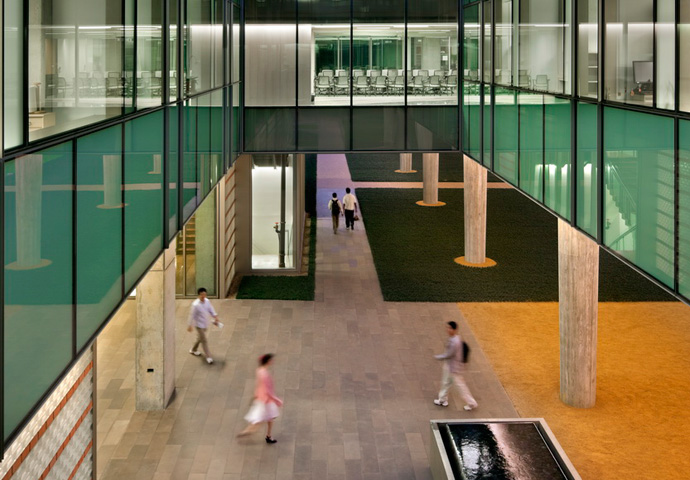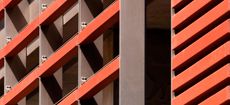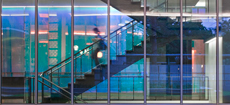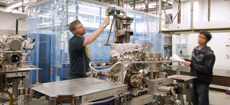Prototyping Multiple Facades for a Single Building
Brockman Hall is composed of two bars nestled between existing buildings. This results in a total of eight different facades.
In the spring of 2008, we began design for Brockman Hall for Physics at Rice University in Houston, Texas. This 110,000 square-foot facility will house research, teaching, and office space for the Departments of Physics & Astronomy and Electrical & Computer Engineering. Nestled between existing buildings in the dense Science Quad, the building envelope respects the scale of the historic masonry vocabulary of the campus while extending it into a twenty-first century model for architecture and research at Rice.
The building's eight facades are designed as a series of layers that allow daylight to filter through while solar gain and glare are kept out, and privacy for researchers is maintained. Each façade is uniquely tuned to its solar conditions and adjacency to other buildings, taking strong cues from the predominant proportions on campus while employing innovative materials appropriate to the site and building program.
The most public façade on the north is a glass curtain wall with a continuous silk-screened Penrose pattern that helps the building recede into its surroundings. On the opposite side of the building, the south façade is a composition of colored aluminum composite cladding behind a sun screen of thin horizontal terracotta elements. The inner facades are entirely glass, and the east and west facades are fritted glass with thin aluminum sunshades.
We constructed several prototypes in our office, using both actual materials and facsimiles. The sun screen for the south façade was constructed to test the appearance of various materials behind the terra cotta elements, including iridescent-coated metal panels, painted metal panels, and cement board. The terracotta tubes in this mockup were simulated using painted high-density foam. A full-scale mockup with real materials was later constructed at Admiral Glass in Houston.

Seven-by-eight-foot mockup of the south facade, constructed to evaluate scale, spacing, technical qualities, and color
Hybrid glass and brick masonry walls clad the first story as a counterpoint to the solid walls of the adjacent buildings—their scale and proportion referring to the traditional masonry elements used throughout Rice's campus. We created a mockup of the wall in our shop to explore patterning, scale, and finishes. A larger mockup of the current design is under construction at the project site. Off-site fabrication of the glass masonry walls is under consideration.
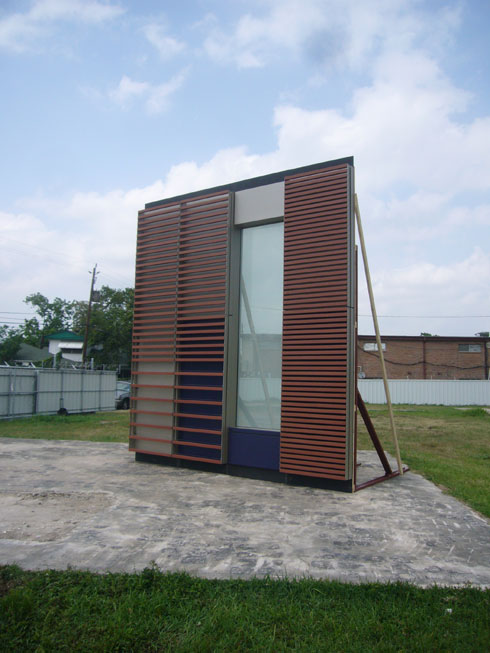
Full scale 15-by-15 foot mockup at Admiral Glass in Houston
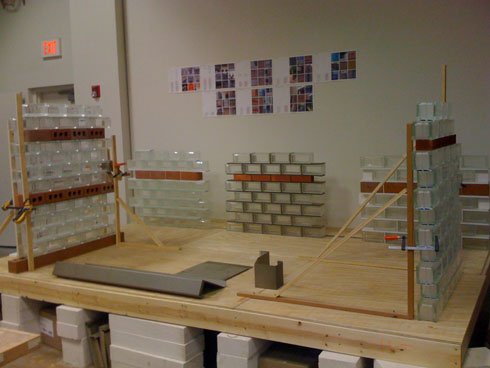
Hybrid glass and brick masonry wall prototypes of the ground level building skin
The glass and Penrose frit pattern for the north facade were simulated with a laser-etched acrylic sheet to test scale and registration of the pattern.
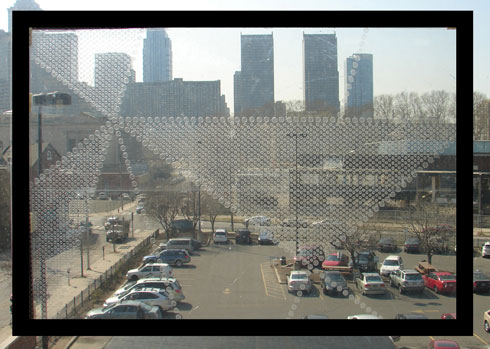
Full-scale mockup of a portion of glazing for the north facade
Using 12-by-12 inch IGU samples provided by glazing vendors, the design team constructed boxes to evaluate proposed curtainwall details, as well as the deployment of different types of glass, spandrel variations, and translucency. The boxes were staged outdoors and photographed in different orientations and conditions in order to provide a basis for discussion in subsequent design reviews.




